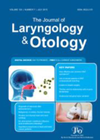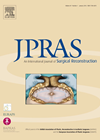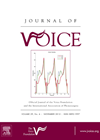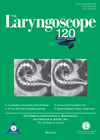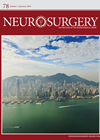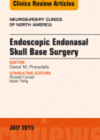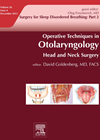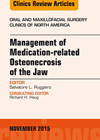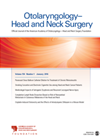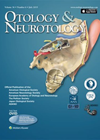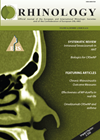
Journal Reviews archive for March 2016
Influence of atmospheric conditions on post tonsillectomy secondary haemorrhage
Haemostasis in epistaxis and a good few other conditions outside the field of otolaryngology seem to be affected by the weather. It is generally thought that dry and hot environment encourages secondary post tonsillectomy haemorrhage. Variations in water vapour pressure,...
Treating keloid scarring with pressure clips following excision: does it work?
Keloid scars can pose a difficult management problem. Whilst not harmful in themselves they can be cosmetically unappealing and lead to social embarrassment and resulting isolation, and following surgical excision they often reoccur. Mechanical pressure is an adjuvant to surgical...
Voice outcomes following extended laser resections for laryngeal cancer
It is now widely accepted that the oncological and voice outcomes following transoral laser microsurgery for early T1a glottic cancers are equivalent to, if not superior to, traditional radiotherapy. Voice outcomes following more extensive resections have not been as frequently...
Surgical voice restoration after laryngopharyngectomy
Voice restoration is one of the key rehabilitative steps after laryngectomy or total laryngopharyngectomy (TLP). Patients who undergo TLP require reconstruction – increasingly commonly with microvascular free flaps. Despite their advantages in terms of fistula rates and swallowing outcomes, these...
Novel balloon device to control cavernous sinus bleeding
In their Letter to the Editor, the authors suggest a draft for a novel balloon catheter device for sinus haemostasis during trans-sphenoidal surgery which is associated with uncontrollable sinus bleeding in 1-8% cases. Their proposed device has a single lumen...
Reducing readmission rates after transsphenoidal pituitary surgery
This retrospective study provides an outpatient care pathway to screen and manage delayed hyponatremia which the study identified as the primary cause of readmission following transsphenoidal pituitary surgery. Of the 303 patients who were studied, 27 were readmitted within 30...
The increasingly favourable outcomes from endoscopic endonasal approaches for the management of pituitary adenomas
Historically, pituitary tumours have been surgically managed with an open, transcranial approach. Although this approach still has its merits in large intracranial adenomas, technological advancement has allowed smaller tumours to be debulked via a transseptal microscopic technique. These days, the...
Surgery for hypopharyngeal obstruction causing OSA
Surgical treatments for OSA are evolving with improved diagnostic accuracy of the level(s) involved. Where the collapsing segment lies below the soft palate, a variety of surgical techniques to correct the affected segment(s) are emerging. This article concentrates on one...
Diagnosis of osteonecrosis of the jaw
Although the management of osteonecrosis of the jaw is usually provided by colleagues in maxillofacial surgery, it is essential for ENT surgeons to effectively diagnose the various presentations of this condition. Affected bone that is exposed and necrotic may remain...
Velopharyngeal insufficiency after adenotonsillectomy
The authors retrospectively reviewed the clinical records of 320 paediatric patients who underwent either tonsillectomy, adenoidectomy or adenotonsillectomy, under a single paediatric ENT surgeon. Patients with pre-existing velopharyngeal insufficiency (VPI) were excluded, as assessed by preoperative testing for nasal air...
Cochlear implanted children are more likely to have device failure if their balance function is impaired
We know that children with permanent hearing loss are more likely to have an associated balance problem. It is also thought that children with cochlear implants (CI) that fail do so because of an increased risk of falls and head...
Thalidomide in HHT
An interesting paper from a specialist centre in the Netherlands regarding the use of thalidomide in HHT patients. The St Antonius hospital has 1238 patients with HHT and 1% of these use thalidomide. The aim was to assess the benefits,...

